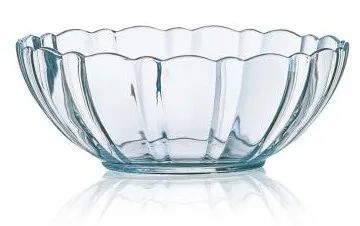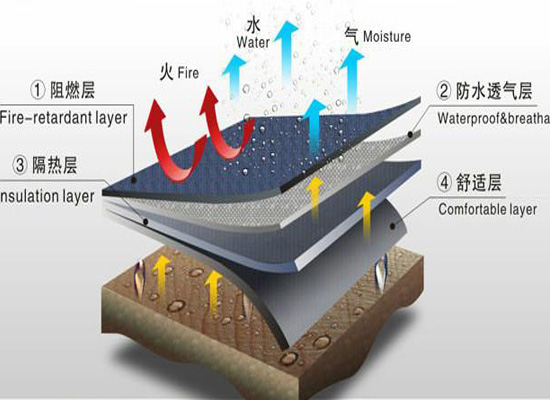Fiberglass fireproof cloth
Fibreglass fireproof cloth
It mainly includes bottle glass, vessel glass, instrument glass, optical glass, electronic glass and electric vacuum glass, glass fiber and glass wool, glass composite materials, etc.
2.1 Bottle glass
Glass containers used for quantitative packaging and holding various liquid and solid items are collectively called glass bottles and jars. Glass bottles and jars are widely used in food, wine, beverages, medicine, etc. Most of them are made of soda-lime glass. There are many varieties of bottle glass, which can generally be classified according to shape, forming method and function.
⑴Classification by shape
Round, oval, square, special-shaped bottles (other shapes). Among them, they are classified according to the bottle mouth: small-mouth bottles have an inner diameter of less than 30mm and are used to contain fluid products; large-mouth bottles (wide-mouth bottles) have an inner diameter of greater than 30mm and are used to contain semi-fluid and solid products.
⑵Classification by forming method
Blow, press blow, press and control bottles (glass is first drawn into glass tubes and then processed into bottles, such as small-capacity penicillin bottles, tablet bottles, etc.).

2.2 Container glass
Utensil glass is similar to container glass. It also has two definitions: broad and narrow. In the broad sense, container glass is a general term for glass such as daily utensils, decorations and works of art; in the narrow sense, container glass refers to glass utensils for food and beverages, such as cups, dish. , plates, bowls, etc. In some foreign documents, vessel glass is included in the scope of container glass.
There are many types of utensil glass, and various utensils for different uses have different requirements for glass performance. According to the chemical composition of glass, it can be divided into ordinary vessel glass, crystalline glass, colored glass and opal glass, etc.; according to the forming process, it can be divided into blown, pressed and kiln glass, etc. Types of glassware are generally classified according to use, and can also be classified according to function and manufacturing method. Classified by use:
⑴Glass wineware (various stemmed wine glasses, stemless wine glasses, liqueur glasses, long-neck corked wine glasses, whiskey glasses);
⑵Glass waterware (water cups, water bottles with thin necks and stoppers, large pitchers with handles and spouts, ice buckets, drink cups, etc.);
⑶Glass tableware (plates, jars, plates, stem plates, salad plates, bowls, condiment bottles and utensils, etc.);
⑷Glass cookware (vessels that can be heated by open flames, electric heat and microwaves, such as frying pans, steamers (deep cooking pots), baking pans, baking sheets, baking dishes, coffee pots, coffee cups and saucers, various types of woks and Cooking pot, induction cooker panel, gas stove and liquefied gas stove panel, kitchen countertop panel);
⑸Miscellaneous glass items (ashtrays, cosmetic containers, storage containers, etc.).
2.3 Instrument glass
Instrument glass refers to glass used to manufacture chemical, biological and laboratory vessels, pipes and devices. Instrument glass has long been widely used in scientific research, culture and education, chemical industry, medicine and health and other industrial production. In addition, various instrument glasses are also widely used in high-tech fields such as aerospace, optoelectronics, lasers, semiconductors, superconductors, bioengineering, and nuclear engineering. The reason why instrument glass can be widely used is that it can resist the erosion of chemical reagents, can also be used as a heating container, and is transparent, making it easy to observe the progress of chemical reactions and control reaction conditions.
At present, instrument glass has developed from small laboratory instrument glass to large-scale industrial devices, such as various reaction towers, absorption towers, separation towers, concentration towers, heat exchangers, reaction tanks, cooking pots, acid-resistant pumps, etc. Instrument glass can be used as deep-water diving ball viewing windows, water column meters, solar power generation devices, solar water heaters, microelectronics and optoelectronic device substrates, insulating materials, and fireproof glass. There are many types of glass instruments, which are usually classified according to the properties of the glass, the purpose of the instrument, and the process conditions. In some foreign instrument glass standards, they are usually divided into several types according to performance. The performance classification standards mainly consider thermal expansion coefficient, thermal stability and chemical stability.
2.4 Optical glass
Optical glass is mainly used as lenses and prisms in optical systems for image transmission. Optical systems have aberrations such as chromatic aberration, spherical aberration, field curvature, and distortion. In order to reduce these aberrations to a certain range, one can use optical glasses with different refractive indexes and dispersions.

2.5 Electronic glass
Electronic glass used for various types of communications, computers, digital TVs, new display devices, new components, new electric light sources and other electronic information is one of the extremely important basic materials for electronic information products. The classification range of electronic glass mainly includes the following:
⑴Black and white picture tube (including black and white display tube) glass envelope, color picture tube (including color display tube) glass envelope;
⑵Electronic glass components for picture tubes (neck tubes for glass bulbs, glass tubes for cores and columns, low glass powder for exhaust pipes, color tubes and bracket glass welding);
⑶Glass for display devices (Because the sensor slide is made of glass, such as DNA sensors using glass optical fibers.
(3) Disease treatment glass, such as rake-releasing drug glass, rake-radiation glass, and magnetically controlled heating glass, can treat different cancers.
(4) Hard tissue repair and bone tissue engineering glasses, such as glass-ceramics containing hydroxyapatite as the main crystal phase, and cuttable glass-ceramics with apatite and mica as the main crystal phases, are used for artificial bones and artificial joints. Hydroxyapatite glass coatings are used to improve the biocompatibility of metal artificial organs with human tissue.
(5) Oral glass such as cast glass-ceramics and glass-impregnated alumina porcelain are used as dental porcelain materials, glass ionomer cement and resin-modified glass ionomer cement are used as dental filling materials, and cut-ceramic glass can be used as oral implants. Enter materials.
(6) Slow-release degradable glass such as glass slow-release fertilizer and glass slow-release feed.
2.3 Energy glass
Glass for energy and new energy refers to converting traditional energy into new energy materials to rationally utilize resources, improve energy storage and energy conversion efficiency, reduce costs, and reduce environmental pollution.
(1) Solid fuel cells, such as glass body fast ion conductors, etc.
(2) Solar cells, such as glass substrates of amorphous silicon solar cells, solar photovoltaic cells composite glass curtain walls, etc.
(3) Solar collectors, such as various specifications of heat-resistant glass tubes used in collectors.
2.4 Eco-environmental glass materials
(1) Antibacterial glass
The characteristic of antibacterial glass is that an antibacterial functional film is coated on the surface of flat glass. Therefore, antibacterial glass can be used wherever glass can and should be used, such as the medical industry, pharmaceutical industry, food industry, home appliance industry, schools, vehicles and ships, and other places and industries.
(2) Self-cleaning glass
A layer of TiO2 nanofilm is coated on the glass surface, which can decompose dirt under ultraviolet irradiation, and the glass can be kept clean for a long time without scrubbing. There are several main ways to make this kind of glass: first, coating a layer of organic titanium film at normal temperature and pressure; second, using the more mature gel-sol coating process; third, float online chemical vapor deposition method (CVD). At present, the first two domestic processes have been basically mature, and some products have been launched. Judging from foreign development trends, the use of online CVD methods to produce self-cleaning glass has great development prospects. This kind of self-cleaning glass that does not need to be scrubbed is an ecological and environmentally friendly “green glass”. When this titanium dioxide (TiO2) photocatalyst film, called a “photocatalyst”, encounters sunlight, fluorescent lamps, or ultraviolet rays, it will turn organic matter and pollutants attached to the surface into oxidized carbon under the excitation of external light. and water, and will be eliminated automatically. At present, it has been widely used in cover glass, automotive glass, high-end glass mirrors and decorative glass for glass curtain walls of high-end buildings.







